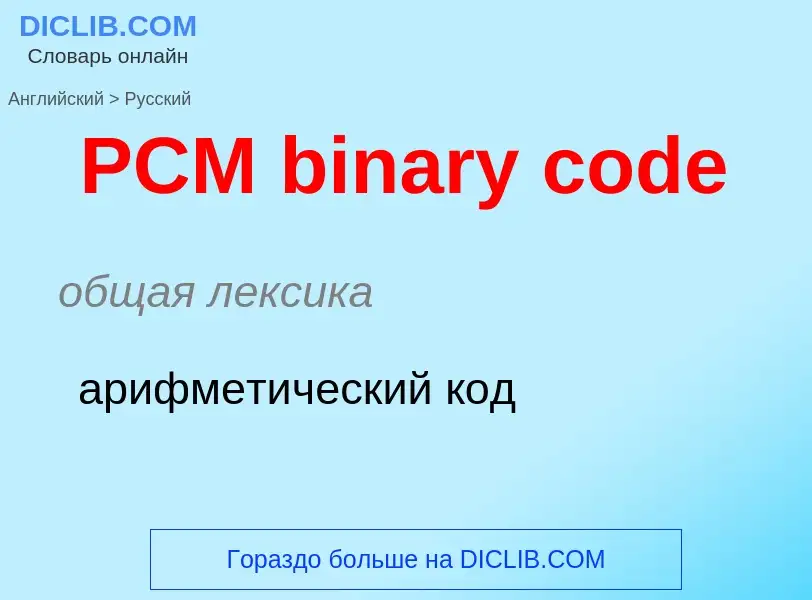Tradução e análise de palavras por inteligência artificial ChatGPT
Nesta página você pode obter uma análise detalhada de uma palavra ou frase, produzida usando a melhor tecnologia de inteligência artificial até o momento:
- como a palavra é usada
- frequência de uso
- é usado com mais frequência na fala oral ou escrita
- opções de tradução de palavras
- exemplos de uso (várias frases com tradução)
- etimologia
PCM binary code - tradução para russo
общая лексика
арифметический код
общая лексика
Pulse Code Modulation
импульсно-кодовая модуляция [сигнала], ИКМ
вид модуляции, при которой аналоговый сигнал кодируется сериями импульсов. Амплитуда аналогового сигнала (как правило, речевого) измеряется 8000 раз в секунду, и полученное значение преобразуется в 8-разрядный цифровой код. Результирующий дискретный поток данных передается в форме цифрового потока со скоростью 64 Кбит/с
импульсно-кодовая модуляция
ИКМ
Смотрите также
Definição
Wikipédia
A binary code represents text, computer processor instructions, or any other data using a two-symbol system. The two-symbol system used is often "0" and "1" from the binary number system. The binary code assigns a pattern of binary digits, also known as bits, to each character, instruction, etc. For example, a binary string of eight bits (which is also called a byte) can represent any of 256 possible values and can, therefore, represent a wide variety of different items.
In computing and telecommunications, binary codes are used for various methods of encoding data, such as character strings, into bit strings. Those methods may use fixed-width or variable-width strings. In a fixed-width binary code, each letter, digit, or other character is represented by a bit string of the same length; that bit string, interpreted as a binary number, is usually displayed in code tables in octal, decimal or hexadecimal notation. There are many character sets and many character encodings for them.
A bit string, interpreted as a binary number, can be translated into a decimal number. For example, the lower case a, if represented by the bit string 01100001 (as it is in the standard ASCII code), can also be represented as the decimal number "97".

![[[George Boole]] [[George Boole]]](https://commons.wikimedia.org/wiki/Special:FilePath/George Boole color.jpg?width=200)
![[[Gottfried Leibniz]] [[Gottfried Leibniz]]](https://commons.wikimedia.org/wiki/Special:FilePath/Gottfried Wilhelm Leibniz, Bernhard Christoph Francke.jpg?width=200)
